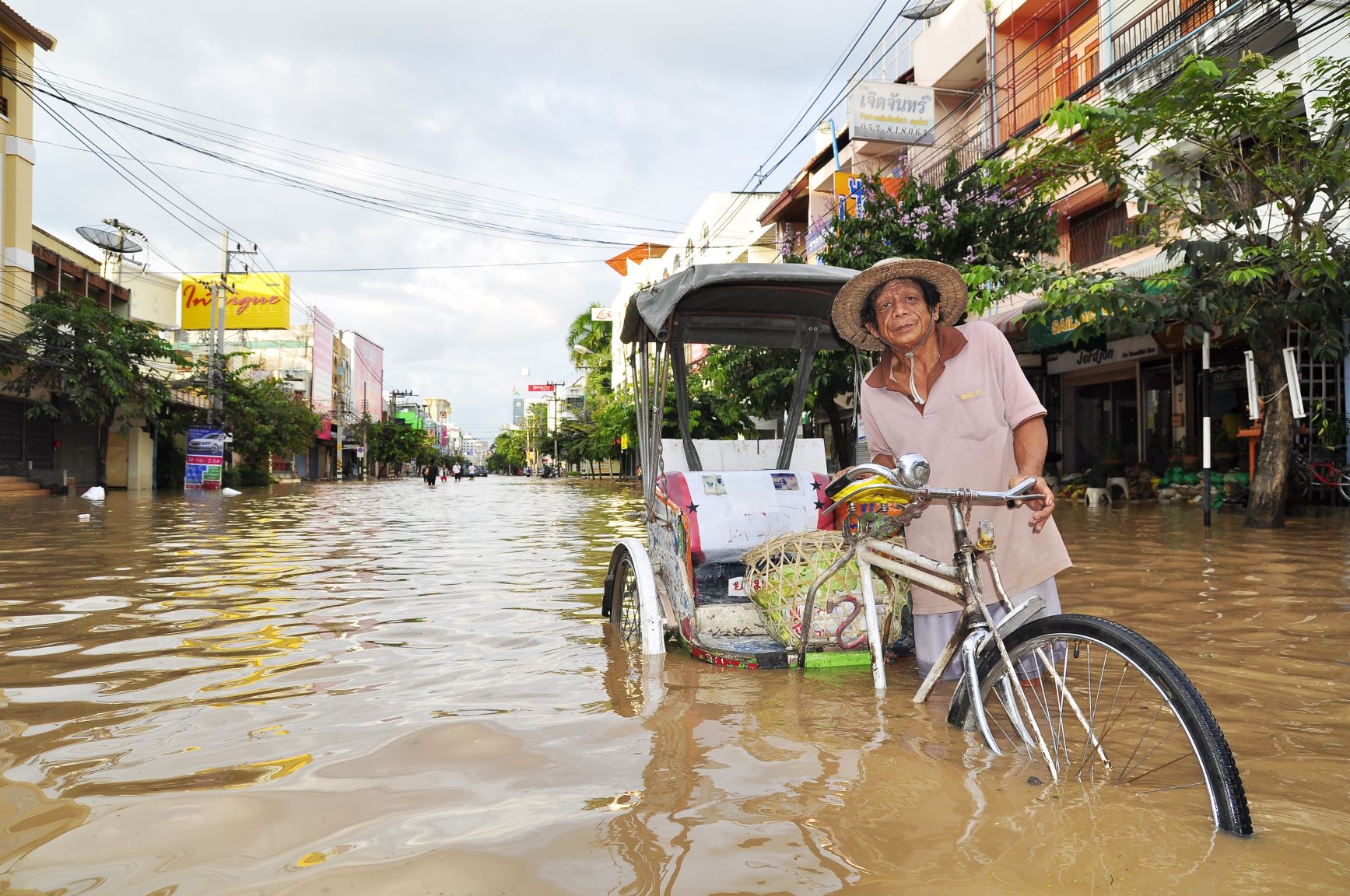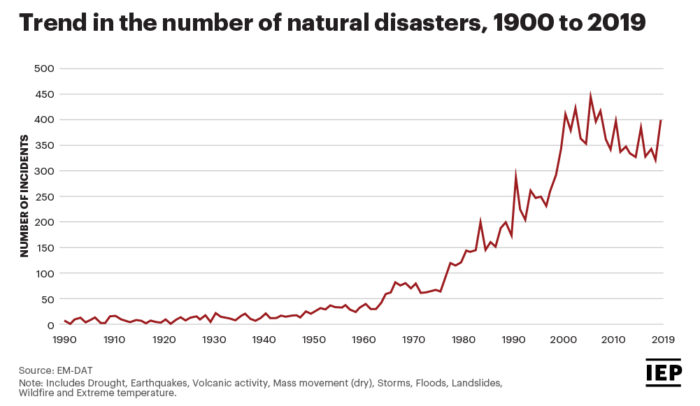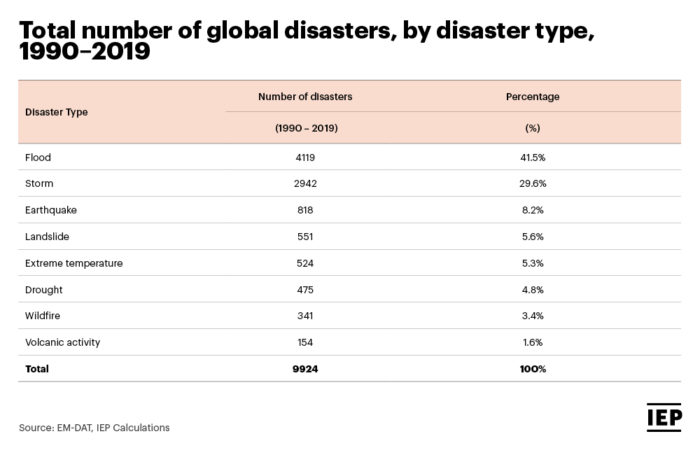The world has witnessed a tenfold increase in the number of natural disasters since the 1960s, the 2020 Ecological Threat Register (ETR) shows.
Data captured between 1900 and 2019 by the Institute for Economics and Peace reveal an increase from 39 incidents in 1960 to 396 in 2019.

In 2005, the world experienced the largest amount of natural disasters that left a death toll of more than 90,000 after 442 incidents with another 160 million people in need of immediate assistance.
The negative impacts of natural disasters depend on the intensity of individual incidents. Natural disasters can be of low intensity and occurring frequently, or they can be one-off catastrophic events.
In 2004, a tsunami affected numerous countries in Southeast Asia and represents a one-off catastrophic incident that has substantial impacts. The tsunami caused more than 220,000 deaths and widespread destruction across the region.
The resulting cost of addressing damage caused by natural disasters has risen from US$50 billion per year in the 1980s to US$ 200 billion per year in the last decade.

Flooding is the most common natural disaster since 1990. From 1990 to 2019, a total of 9,924 natural disasters occurred globally, of which 42 per cent were floods.
Storms including cyclones, hurricanes, tornadoes, blizzards, and dust storms, followed and accounted for 30% of the total natural disasters in this time period. Together, floods and storms account for 71% of the disasters that have occurred since 1990.
Changes in climate conditions, especially the warming of global temperatures increases the likelihood of weather-related natural disasters. Hotter global temperatures increase the risk of droughts as well as increase the intensity of storms and create wetter monsoons.
This is most visible when seen through changes in the intensity and frequency of droughts, storms, floods, extreme temperatures and wildfires. In the face of more common extreme weather events and climate related disasters, natural resources such as land and water will be most vulnerable.
Download and read the full 2020 Ecological Threat Register Report.
